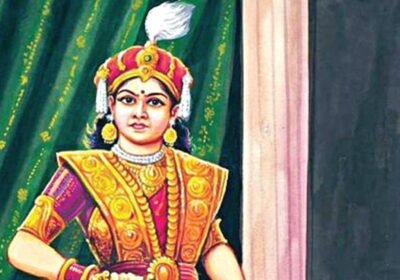Discovering Liberia: A Journey Through History, Architecture, and Culture
The Origin Story of Liberia
The history of Liberia is rooted in the early 19th century, a direct result of the American Colonization Society’s (ACS) efforts to create a colony for freed African-American slaves. The motivations for this endeavor were complex, encompassing both humanitarian ideals and the desire to alleviate the perceived social tensions between white settlers and black freedmen in America. The ACS advocated for the repatriation of these freed individuals to Africa, which they viewed as a means of addressing both the issue of slavery within the United States and the challenges faced by formerly enslaved people. Consequently, in 1822, the ACS established a colony on the west coast of Africa, aptly named Liberia, which translates to “Land of the Free.”
Initially, the movement towards repatriation was fraught with challenges. The settlers faced numerous difficulties, including hostile encounters with indigenous tribes, the harshness of the tropical climate, and the underdeveloped infrastructure of the nascent colony. The indigenous cultures that existed prior to colonization, comprised of various ethnic groups such as the Kpelle, Bassa, and Grebo, presented a complex social fabric that would interact with the new settlers in profound ways. This early period of settlement required resilience and adaptability from the settlers, as they navigated both external conflicts and the intricacies of establishing their new community.
Key figures played crucial roles in shaping the destiny of Liberia. Notably, James Monroe, the fifth President of the United States, supported the ACS’s endeavors, and the capital city, Monrovia, is named in his honor. Samuel Morris, an African-American missionary who became an advocate for the colony, contributed significantly to the promotion of Liberia’s growth and the welfare of its inhabitants. These individuals, among others, laid the groundwork for Liberia’s identity, creating a blend of influences that continue to resonate in its cultural landscape today.
Key Historical Events and Their Impact
The history of Liberia is marked by significant events that have shaped its national identity and socio-political landscape. The most notable among them is Liberia’s declaration of independence in 1847. This pivotal moment not only signified the establishment of Liberia as the first independent republic in Africa but also set the stage for a unique narrative of freedom and autonomy, distinct from the colonial experiences of many African nations. The country’s formation was largely influenced by freed American slaves, who sought a new life in Africa. This connection to a broader narrative of freedom echoes throughout Liberia’s historical journey.
As Liberia developed, it encountered numerous challenges, including internal divisions and external conflicts. The civil wars that erupted in the late 20th century were particularly catastrophic. These brutal conflicts, fueled by political instability and social strife, resulted in widespread devastation and loss of life. However, the resilience of the Liberian people shone through these dark times. The eventual path to peace was marked by significant efforts from both national and international actors, aimed at reconciliation and rebuilding the war-torn nation.
An influential figure in this post-conflict reconciliation was Ellen Johnson Sirleaf. As the first elected female head of state in Africa, she played a vital role in the country’s recovery process. Her leadership focused on rebuilding infrastructure, fostering economic growth, and promoting unity among the diverse ethnic groups in Liberia. Sirleaf’s government sought to address the deep socio-economic disparities that had been exacerbated by the wars.
These historical events have left a lasting impact on modern Liberian society. The scars of civil strife and the triumphs of independence continue to inform national discourse. Today, as Liberia enjoys a fragile peace, it is essential to recognize the lessons of its past while embracing the opportunity for growth and development, which remains critical for its future and identity.
Architectural Heritage: A Reflection of Culture
The architectural landscape of Liberia is a captivating reflection of its intricate cultural tapestry, showcasing a blend of colonial legacies, traditional structures, and modern influences. Monrovia, the capital city, is particularly noteworthy for its diverse architectural styles, which represent the country’s rich historical narrative and social evolution. The colonial architecture established during the 19th century, characterized by its neoclassical and Victorian elements, can still be observed in various buildings that grace the city. These structures serve as silent witnesses to the era of resettlement, illustrating the complex relationship between the settlers and indigenous communities.
Among the significant sites is Providence Island, which is rich in historical context and contains remnants of Liberia’s early years. The Providence Island Historic District features structures that date back to the founding of Monrovia, symbolizing the resilience and hope of those who arrived seeking a new beginning. Furthermore, the Executive Mansion stands as a prominent example of neoclassical architecture, embodying the political history of Liberia while also attracting visitors wishing to understand its historical significance.
In contrast to these colonial structures, the traditional Lloyd’s buildings showcase indigenous architectural styles that reflect local materials and cultural values. These buildings, often designed to harmonize with their surroundings, provide insights into the lifestyle and customs of the Liberian people. Today, contemporary architecture continues to evolve, representing a fusion of local and international trends, which is evident in new developments across the country.
The ongoing efforts to preserve and revitalize Liberia’s architectural heritage amid modernization highlight a commitment to maintaining the country’s unique identity. These initiatives not only safeguard historical landmarks but also encourage tourism, allowing visitors to experience Liberia’s rich history through its architectural marvels. This beautiful confluence of architectural styles in Liberia is an enduring testament to its cultural journey, emphasizing the importance of understanding these influences for future generations.
Experiencing Liberia Today: A Cultural Mosaic
Visiting Liberia today offers a unique opportunity for travelers to immerse themselves in a vibrant cultural landscape shaped by its rich heritage and diverse ethnic groups. The country is not only a destination of historical significance, but it also showcases a progression towards recovery, making it an intriguing place to explore. A range of attractions awaits visitors, from national parks adorned with lush rainforests to museums that narrate the origin story of Liberia’s establishment and its pivotal historical events.
One premier destination is Sapo National Park, a biological haven that provides insight into the region’s natural environment. This sanctuary is home to numerous endemic species and offers eco-tourism opportunities, allowing visitors to engage directly with Liberia’s stunning biodiversity. In addition, the National Museum of Liberia in Monrovia invites exploration of the country’s art and historical artifacts. Through permanent exhibitions, one can learn about notable figures connected to Liberia, including political leaders and influential artists who have shaped its cultural narrative.
Cultural festivals play a critical role in Liberia’s contemporary society, showcasing traditional music, dance, and unique culinary offerings. Events such as the Momo Festival and the Grand Bassa Cultural Festival reflect the pride of various ethnic communities, celebrating their customs through vibrant performances. For those seeking genuine experiences, engaging with local communities is crucial. Visiting local markets, participating in traditional cooking classes, or attending a community gathering can provide rich interactions illustrating Liberian hospitality.
The resilience and spirit of Liberia are palpable in its arts, music, and cuisine, each reflecting the country’s journey toward renewal. As visitors explore and engage with these elements, they gain a deeper understanding of Liberia’s cultural impact. The reason Liberia remains a significant destination is its ability to exhibit a dynamic blend of history and modernity, allowing travelers to witness the ongoing evolution of a nation that emerged triumphantly from its challenges.









